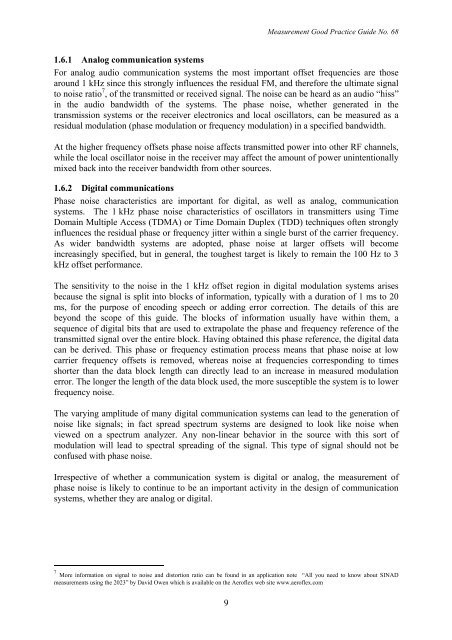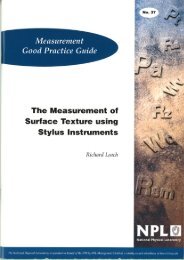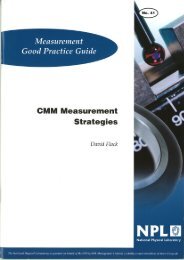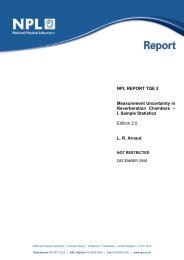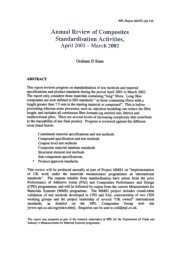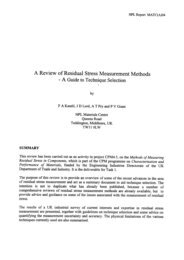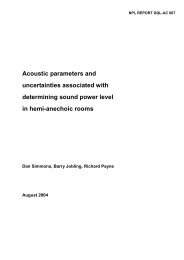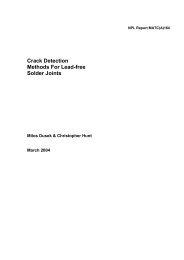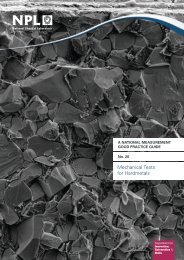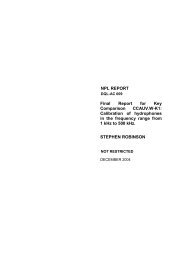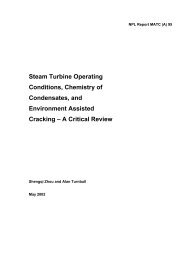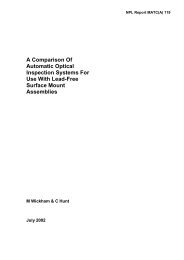Good Practice Guide to Phase Noise Measurement ... - Sequanux
Good Practice Guide to Phase Noise Measurement ... - Sequanux
Good Practice Guide to Phase Noise Measurement ... - Sequanux
Create successful ePaper yourself
Turn your PDF publications into a flip-book with our unique Google optimized e-Paper software.
<strong>Measurement</strong> <strong>Good</strong> <strong>Practice</strong> <strong>Guide</strong> No. 68<br />
1.6.1 Analog communication systems<br />
For analog audio communication systems the most important offset frequencies are those<br />
around 1 kHz since this strongly influences the residual FM, and therefore the ultimate signal<br />
<strong>to</strong> noise ratio 7 , of the transmitted or received signal. The noise can be heard as an audio “hiss”<br />
in the audio bandwidth of the systems. The phase noise, whether generated in the<br />
transmission systems or the receiver electronics and local oscilla<strong>to</strong>rs, can be measured as a<br />
residual modulation (phase modulation or frequency modulation) in a specified bandwidth.<br />
At the higher frequency offsets phase noise affects transmitted power in<strong>to</strong> other RF channels,<br />
while the local oscilla<strong>to</strong>r noise in the receiver may affect the amount of power unintentionally<br />
mixed back in<strong>to</strong> the receiver bandwidth from other sources.<br />
1.6.2 Digital communications<br />
<strong>Phase</strong> noise characteristics are important for digital, as well as analog, communication<br />
systems. The 1 kHz phase noise characteristics of oscilla<strong>to</strong>rs in transmitters using Time<br />
Domain Multiple Access (TDMA) or Time Domain Duplex (TDD) techniques often strongly<br />
influences the residual phase or frequency jitter within a single burst of the carrier frequency.<br />
As wider bandwidth systems are adopted, phase noise at larger offsets will become<br />
increasingly specified, but in general, the <strong>to</strong>ughest target is likely <strong>to</strong> remain the 100 Hz <strong>to</strong> 3<br />
kHz offset performance.<br />
The sensitivity <strong>to</strong> the noise in the 1 kHz offset region in digital modulation systems arises<br />
because the signal is split in<strong>to</strong> blocks of information, typically with a duration of 1 ms <strong>to</strong> 20<br />
ms, for the purpose of encoding speech or adding error correction. The details of this are<br />
beyond the scope of this guide. The blocks of information usually have within them, a<br />
sequence of digital bits that are used <strong>to</strong> extrapolate the phase and frequency reference of the<br />
transmitted signal over the entire block. Having obtained this phase reference, the digital data<br />
can be derived. This phase or frequency estimation process means that phase noise at low<br />
carrier frequency offsets is removed, whereas noise at frequencies corresponding <strong>to</strong> times<br />
shorter than the data block length can directly lead <strong>to</strong> an increase in measured modulation<br />
error. The longer the length of the data block used, the more susceptible the system is <strong>to</strong> lower<br />
frequency noise.<br />
The varying amplitude of many digital communication systems can lead <strong>to</strong> the generation of<br />
noise like signals; in fact spread spectrum systems are designed <strong>to</strong> look like noise when<br />
viewed on a spectrum analyzer. Any non-linear behavior in the source with this sort of<br />
modulation will lead <strong>to</strong> spectral spreading of the signal. This type of signal should not be<br />
confused with phase noise.<br />
Irrespective of whether a communication system is digital or analog, the measurement of<br />
phase noise is likely <strong>to</strong> continue <strong>to</strong> be an important activity in the design of communication<br />
systems, whether they are analog or digital.<br />
7 More information on signal <strong>to</strong> noise and dis<strong>to</strong>rtion ratio can be found in an application note “All you need <strong>to</strong> know about SINAD<br />
measurements using the 2023” by David Owen which is available on the Aeroflex web site www.aeroflex.com<br />
9


